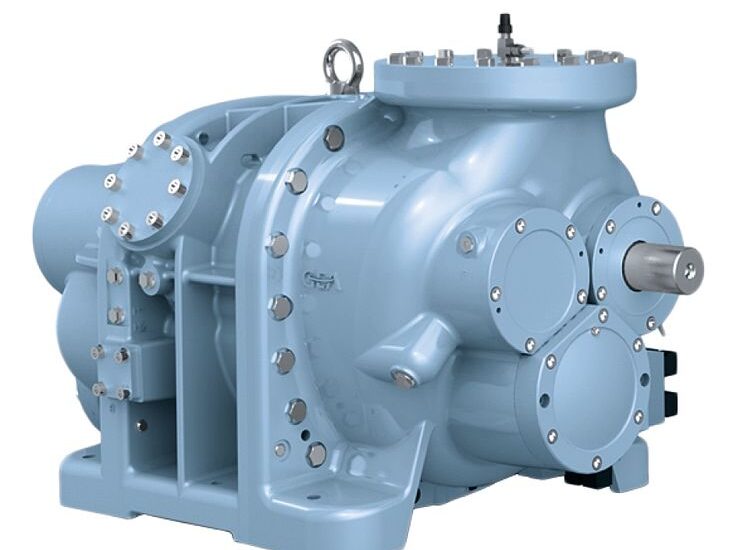Refrigerant compressors, these are the real cool guys of every cooling system. The heartbeat of your fridge, air conditioner, or your car’s AC. They’re key to keeping you and your food cool. There are different refrigerant compressor types, each with its own set of strengths and weaknesses. Let’s get you familiar with the world of refrigerant compressors.

Table of Contents
Brief Overview of Refrigerant Compressors
In a nutshell, refrigerant compressors pump the refrigerant around your cooling system. It’s their job to suck in the refrigerant at a low pressure, compress it, and spit it out at a high pressure. This cycle is critical to keep things chilled. What’s more? There’s more than one kind of these cool operators. We’ll get to that in a bit.
Understanding Refrigerant Compressors
The Role of a Refrigerant Compressor in a Cooling System
Think of the refrigerant compressor as the heart of your cooling system. Just as your heart pumps blood through your body, the compressor circulates refrigerant through the system. And without it? You might as well throw your cooling system out of the window! How about efficiency? Well, the type of compressor you choose can make a big difference in that.
Factors Influencing Compressor Choice
So, what swings the pendulum when choosing a compressor? Capacity, efficiency, cost, and reliability. You’ve got to ask yourself: How much cooling do I need? How energy efficient should it be? What’s my budget? Can I rely on it in the long run? Choices, choices!
For more articles on refrigerants, click here.
Refrigerant Compressor Types
Reciprocating Compressors
Principle of Operation
Reciprocating compressors work like your car’s engine. They use pistons, cylinders, and valves to suck in, compress, and discharge refrigerant. Sounds complicated? It’s not, they’re as rhythmic as a heartbeat.
Pros and Cons
Reciprocating compressors are the old reliable. They’re robust, versatile, and have a wide range of applications. But like everything, they’ve got a few shortcomings. They can be noisy, require more maintenance, and are less efficient compared to some of the other kids on the block.
Common Applications
Where will you find them? Residential AC systems, small commercial cooling systems, and refrigerators. Remember your car’s AC system? Yep, there’s likely a reciprocating compressor in there too.
Scroll Compressors
Principle of Operation
Scroll compressors, a true work of art. They’ve got two spiral-shaped scrolls. One stays put while the other orbits around it, compressing the refrigerant in the process. It’s like a graceful dance, don’t you think?
Pros and Cons
Scroll compressors are quiet, efficient, and reliable. Sounds perfect, right? But they do come with a heftier price tag, and repairing them? Not so straightforward.
Common Applications
You’ll mostly find these in residential and small commercial cooling systems. They’re also commonly used in automotive AC systems and heat pumps.
Rotary Compressors
Principle of Operation
Rotary compressors have a pair of rotors with helical grooves. The refrigerant is compressed as these rotors rotate and intermesh. Kind of like a corkscrew turning to open a bottle of wine.
Pros and Cons
These guys are compact, efficient, and quiet. But they might not be your first choice for large-scale cooling needs. Why? They lack the cooling capacity that some other types boast.
Common Applications
Rotary compressors are most often found in residential AC systems, window air conditioners, and portable air conditioners.
Screw Compressors
Principle of Operation
Screw compressors? No, they don’t work with a screwdriver! They’ve got two interlocking screws. As they turn, the refrigerant gets squeezed in between, raising its pressure. Picture squeezing toothpaste from a tube!
Pros and Cons
Screw compressors are highly efficient and suitable for large capacities. But they can be pricy, and they might overkill for small-scale applications.
Common Applications
These heavy-duty guys are mostly used in industrial and large commercial cooling systems.
Centrifugal Compressors
Principle of Operation
Centrifugal compressors? Imagine a spinning merry-go-round. They use a high-speed impeller to accelerate the refrigerant, which is then slowed down, creating a higher pressure.
Pros and Cons
Centrifugal compressors are efficient, quiet, and perfect for large cooling capacities. But they come with a high initial cost and can be complex to maintain.
Common Applications
You’ll find these in large commercial and industrial cooling systems, like in skyscrapers or big factories.
Selection Criteria for Refrigerant Compressors
Picking the right refrigerant compressor type? It’s all about matching your needs to the compressor’s abilities. Think about the cooling capacity, energy efficiency, reliability, cost, and the conditions under which it will operate. Choose wisely, my friends!
Future Trends in Refrigerant Compressors
So, where are we heading with refrigerant compressors? Think more efficiency, lower environmental impact, and smart compressors that can communicate with other devices. Exciting, isn’t it?
Conclusion
And there you have it, folks, a journey through the world of refrigerant compressor types. They’re the cool heart of your cooling system, and choosing the right one can make all the difference. Remember, your needs dictate the type of compressor you choose. Stay cool!